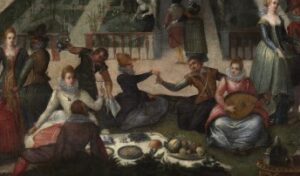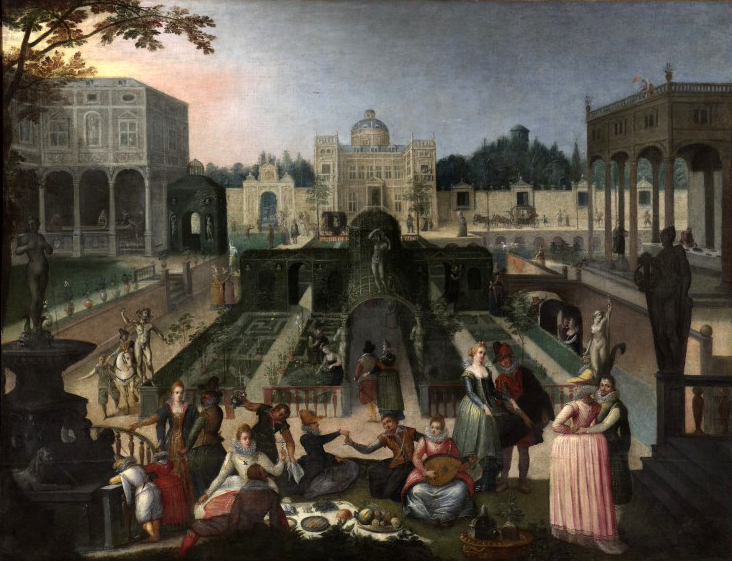Feast In The Park Of The Duke Of Mantua or Fête dans le Jardin du Duc de Mantoue is picnicky but not a feast. The curators of the Musée des Beaux-Arts probably assign the title. It is a garden of lovers dining alfresco in an imaginary architectural setting. The architecture is not like the Duke of Mantua’s famous Palazzo Te.
The fête is an excuse for depicting primary activity, leisure, and lovemaking. Couples, both heterosexual and homosexual, are engaged in some romantic liaison: touching and embracing though nothing is overtly lustful or indecorous. Flanking the garden is a statue of Ceres, goddess of fertility, on the left, and Bacchus’s drunkenness and lewd behavior on the right. A statue of a woman, perhaps Venus, stands at the far end of the fountain. Some food is also suggestive, such as the figs on the white picnic cloth. Besides wine, grapes, figs, and pears, there are seasonal fruits and cakes.
*Vranckx’s scene was probably commissioned by Vincenzo Gonzaga, Duke of Mantua, and his wife, Archduchess Eleonora of Austria, whose court was then the most brilliant in Italy.
Featured Image: Look dead center foreground, and you’ll see a picnic.
See Sébastien Vranckx. Feast in the Park of the Duke of Mantua (1595 c.), oil on canvas. Musée des Beaux-Arts, Rouen, France http://mbarouen.fr/en/oeuvres/feast-in-the-park-of-the-duke-of-mantua ; Anne MacNeil. “The Nature of Commitment: Vincenzo Gonzaga’s patronage strategies in the Wake of the Fall of Ferrara.” Renaissance Studies. September 2002

